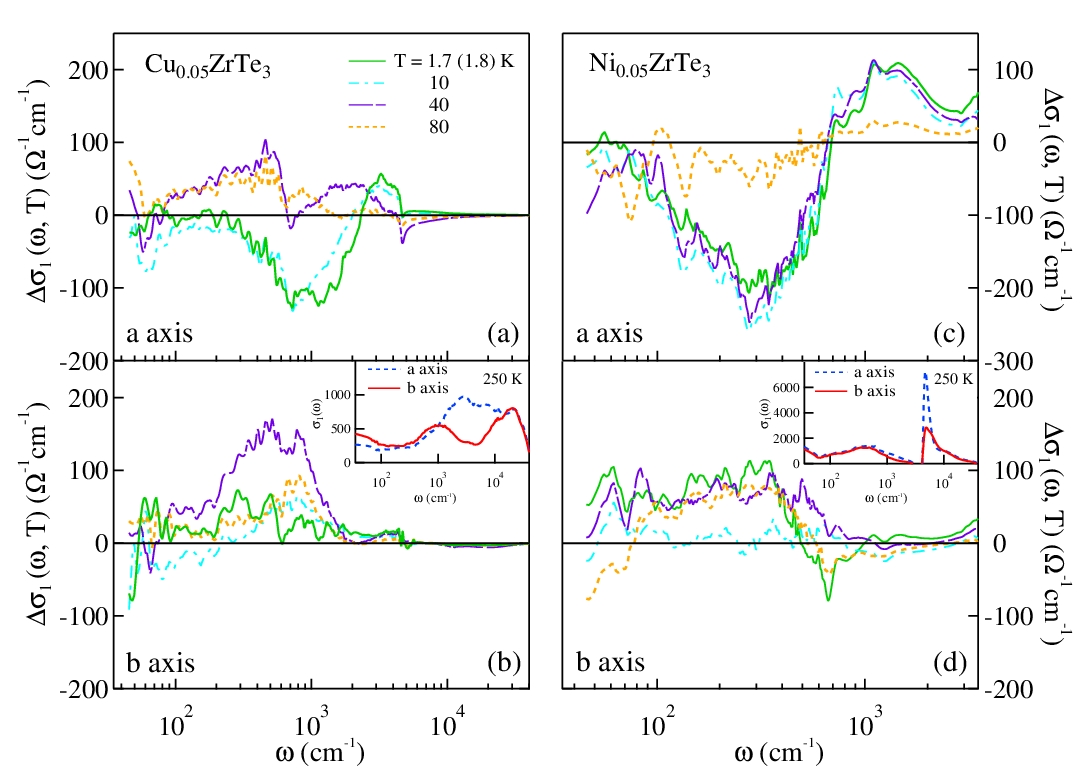Excitation Spectrum in Ni- and Cu-doped ZrTe3

The coexistence as well as the competition of broken-symmetry ground states, like the prominent examples of charge-density-wave (CDW) and superconductivity (SC), have been ever since at the center of interest in solid state physics. Particularly in low-dimensional materials, the peculiar charge ordering, given by the CDW formation, and SC may be seen as specific quantum states originating from Fermi-surface instabilities, the interplay of which leads to interesting phase diagrams. This has led to a vigorous research activity also because the issue of their coexistence and competition has far more generic theoretical implications with respect to ideas foreseeing quantum criticality. The layered MX2 as well as the chain-type MX2 (M = transition metal and X = S, Se or Te) are well-known examples of CDW chalcogenide superconductors. We provide here an optical study of both Ni- and Cu-doped ZrTe3, deploying their complete excitation spectrum. The CDW transition opens a single particle gap along the a-axis only, while it reinforces a correlated state along the Zr-Zr chains (Fig.3.18) , characterized by a narrow coherent Drude-like component in σ1(ω) at low temperatures. Moreover, the extended reshuffling of spectral weight (SW) occurring well above TCDW bears testimony for important precursor effects, preceding the CDW transition. While we cannot observe any clear-cut signature of the SC gap but at most an incipient onset (like in Cu0.05ZrTe3), our data (Fig.3.18) indicate that there is not any SW transfer from energy scales substantially exceeding the SC gap itself. In this respect, SC in the title compounds is rather conventional. By assuming a homogeneous sample, the CDW and superconducting condensates seem to coexist in real space along the a-axis and consequently to affect separate regions in the reciprocal space.